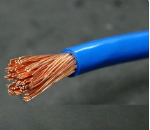Spring washers are used in mechanical components where fasteners may become loose due to vibration. These washers provide a constant pressure on the bolt and nut, keeping them tight. Spring washers also offer the component the ability to handle impact loads. The editor has compiled an analysis regarding the expansion of spring washers for the reference and learning of fastener professionals.
01. The Installation and Force Process of Spring Washers
When the bolt is tightened, the lower bearing surface of the bolt head pushes against point A in the direction of tightening, and the plain washer is pushed against point D in a clockwise direction as per the tightening direction. This eventually keeps points A and C, B and D on the same plane. At this point, the spring washer is flattened, indicating that the maximum axial force applied by the spring washer on the bolt and plain washer has been achieved.
When the bolt is loosened, the lower bearing surface of the bolt head pushes against point A in the opposite direction of loosening, causing A to indent into the bearing surface; the plain washer pushes against point D in the opposite direction of loosening, causing D to indent into the plain washer. Continuing to loosen will cause the spring washer to expand.
02. Causes of Spring Washer Expansion
- 1. The gap size between the bolt and the spring washer hole diameter: Since the inner diameter of the spring washer is the nominal thread size plus the "upper deviation," while the non-threaded shank diameter or the major diameter of the thread of the bolt is the nominal size with negative deviation, in extreme cases where the spring washer inner diameter is made with upper deviation and the bolt shank or thread major diameter is made with lower deviation, the size gap of the bolt and spring washer assembly is quite large.
- 2. The installation form of the connecting pair: The installation form of the connecting pair is divided into horizontal and vertical installations based on the bolt axis. It is evident that when horizontally installed, the spring washer hangs on the bolt, thus maximizing the gap mentioned in point 1. The eccentricity that could be avoided as much as possible in vertical installations will not be avoidable. If the gap in the spring washer is exactly below the axis line or even at the bottom, the proportion of expansion will be high.
- 3. The size of the bolt and nut support surface: The diameter of the support surface of the bolt and nut in contact with the spring washer is close to the outer diameter of the spring washer or even close to the inner diameter, leading to a force that expands the spring washer outward during the tightening process, causing the washer to fail.
- 4. The burrs at the cut edge of the spring washer: Due to the machining process, there will definitely be burrs of varying sizes at the cut edge of the spring washer. After heat treatment, these burrs with higher hardness may directly embed into the plain washer or the connected component body, causing the spring washer to elongate and fail during the tightening process of the bolt and nut.
- 5. The width size of the spring washer's cut: The maximum width size of the cut is half the thickness of the spring washer when it is flattened. Due to equipment and tool adjustment during the cutting process of the spring washer, it is difficult to ensure consistent dimensions, although it meets standard requirements. Larger sizes are more likely to cause expansion.
- 6. The thickness size of the spring washer's cut: During the cutting process, the upper and lower blades form the cut of the spring washer, which is meant to embed into the connected component and prevent loosening when the bolt and nut become loose. This is another anti-loosening point besides the use of axial spring force. However, if the angle of the upper blade is not properly adjusted, the thickness size at the cut end will increase, generally controlled to not exceed 8% of the spring washer's thickness. An excessively large cut thickness size will result in sharper cut edges, making it easier for the spring washer to embed into the bolt, nut, and plain washer during installation, and when tightened, the bolt or nut will cause the spring washer to rotate and expand.
- 7. The hardness of the plain washer: Plain washers commonly used in connecting pairs often have lower hardness and do not strictly match the bolt performance grade as required. Since the hardness of the spring washer is relatively high, generally between 40-50 HRC, if the plain washer's hardness is very low, it will undoubtedly exacerbate the degree to which the sharp corners of the spring washer cut embed into the plain washer.





 Customer service 1
Customer service 1  Customer service 2
Customer service 2